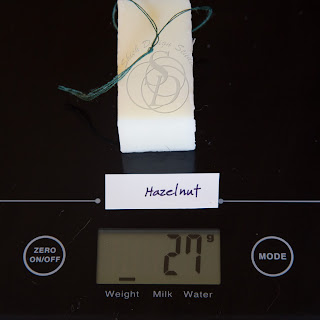I've been honored to be invited to participate in Brambleberry's Soap the Rainbow series. What is Soap the Rainbow? Basically each invited soap maker has an assigned color from the rainbow, each week the soap maker will make a soap project based on the assigned color. For details see the link: Soap the Rainbow Series & Contest
Guess what my color is for this week? BLUE!!!
So fitting for the hot hot summer!
Here are a few of my inspirations:
Glass Sculpture Made by Ben Young
Glass Sculpture made by Paul DeSomma and Marsha Blaker
Ocean Counterpoint made by Stone Ridge Glass
Besides the ocean theme (the obvious choice) for the blues, I want to add a little romantic element into the scheme, what can be more perfect than mermaid, seashell and pearl? I have an image in my head that involves a mermaid's tail flopping on top of the rising waves chasing after the precious pearl washed up to the white sand beach. I don't want to buy a ready made mold to make the mermaid's tails, I prefer a more organic look, so I decided to find a way to pipe them using a cake decorating tip. You can use any tip that is used to pipe rose petal, it's quit easy.
Glass Sculpture made by Paul DeSomma and Marsha Blaker
Ocean Counterpoint made by Stone Ridge Glass
Besides the ocean theme (the obvious choice) for the blues, I want to add a little romantic element into the scheme, what can be more perfect than mermaid, seashell and pearl? I have an image in my head that involves a mermaid's tail flopping on top of the rising waves chasing after the precious pearl washed up to the white sand beach. I don't want to buy a ready made mold to make the mermaid's tails, I prefer a more organic look, so I decided to find a way to pipe them using a cake decorating tip. You can use any tip that is used to pipe rose petal, it's quit easy.
Everything went smoothly, the soap was made, video was recorded, then the day after I realized the video file was never saved! What a nightmare...
I had to make another "emergency" batch to record again the night before this tutorial is due! Unfortunately I only have limited mermaid tails left, but you can see the entire process.
Last but not least here are some salon shots of the original batch of Tale of Mermaid soap:















































